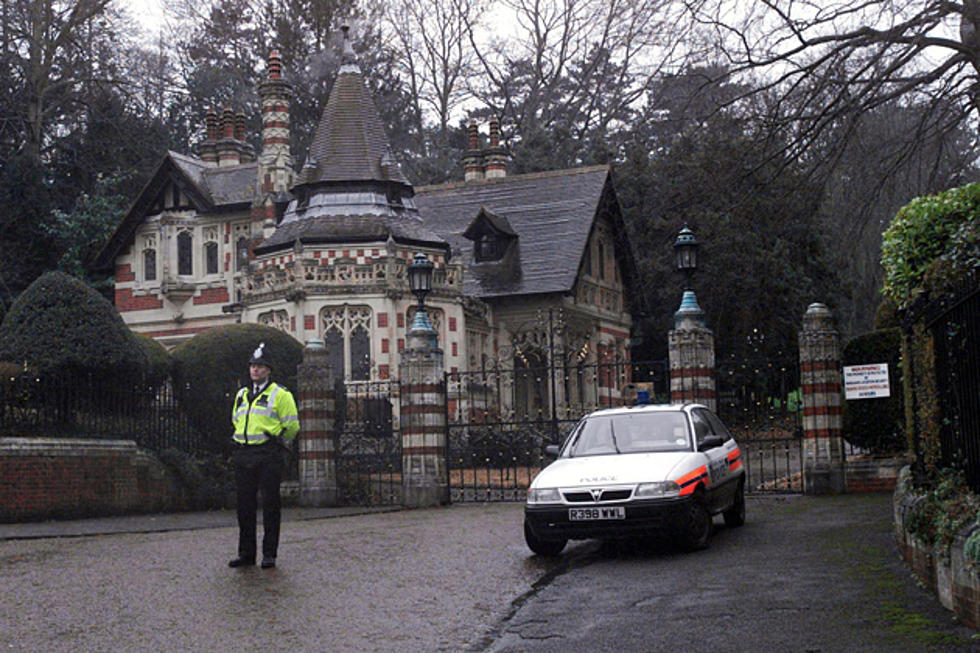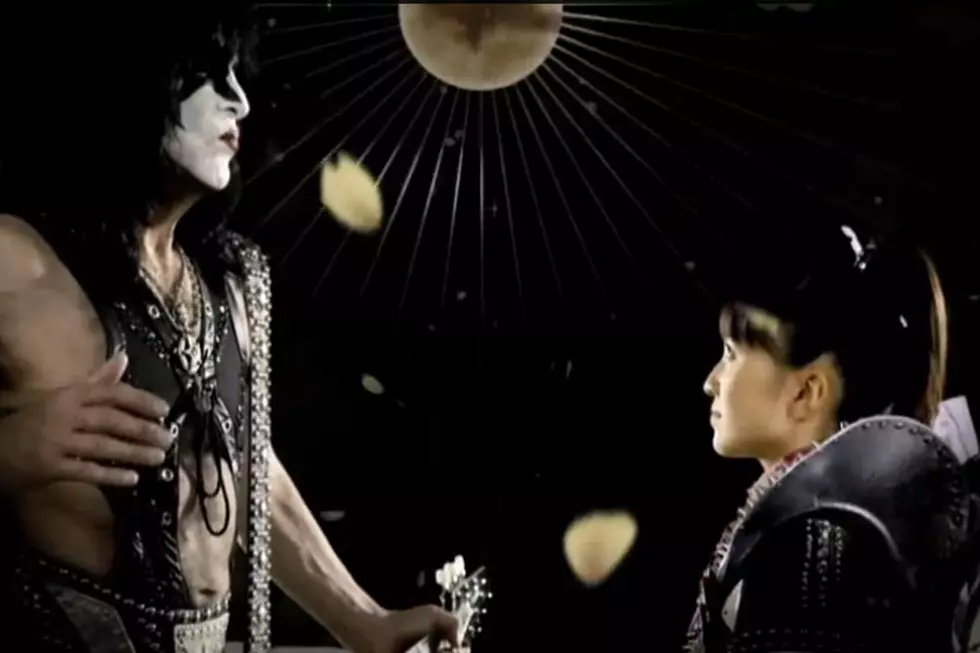
The Archie Andrews Memorial Awards: The Best Comic Books Of 2014, Part Two
The last twelve months offered comic book readers a wide variety of work ranging from the most crowd-pleasing superhero epics to the most idiosyncratic of indies, and the return of old favorites to the emergence of exciting new talent. It was a busy and productive year for the industry, and one we’re pleased to celebrate with what we’re certain will be an uncontroversial, unenumerated list of awards that will prompt only resounding agreement and unbroken fellowship amongst our readers in the comments below. Welcome to part two of ComicsAlliance’s Best Comic Books of 2014.
Click here for PART ONE.
About The Archie Andrews Memorial Awards
Archie Andrews has been considered to be "America's Typical Teen-Ager" since his creation in 1941 by Vic Bloom and Bob Montana. After decades defining life in small-town America -- which as we all know includes a love triangle that doubles as a class war, and a sleepy-eyed best friend with an astonishingly efficient metabolism -- Archie suffered a catastrophic series of events in 2014. Not only did he endure a zombie apocalypse, but in an alternate timeline where he had grown up and returned to Riverdale alongside one of his high school sweethearts, he died after taking an assassin's bullet meant for his friend, recently elected senator Kevin Keller. Archie is survived by his wife, Betty Cooper-Andrews or Veronica Lodge-Andrews, as well as alternate timeline versions of his younger self who will be having plenty of laughs with his friends or watching them die one by one as society collapses under the tireless march of the undead, respectively.
BEST BACKSTABBING
SUPERIOR FOES OF SPIDER-MAN
Artwork by Steve Lieber, Rich Ellis and Rachelle Rosenberg
Written by Nick Spencer
Lettered by Joe Caramagna and Clayton Cowles
Edited by Lauren Sankovitch, Jon Moisan and Tom Brennan
Published by Marvel Comics
Available: Amazon / ComiXology / Comics StoresI knew it in my heart of hearts, but I didn't know for absolutely sure that comics needed a series about often-bumbling, always-scheming, often ineffectual scoundrels trying to outwit each other while they pretend to cooperate on a loose "team" until Superior Foes of Spider-Man debuted last summer. And now it's over. As Cinderella so aptly sang, you don't know what you got 'til it's gone. Luckily, it closed strong. In fact, the finale of Superior Foes may just have been the best series-end of the year. That's in part because creators Nick Spencer and Steve Lieber likely knew that the series wasn't going to last forever (nothing does at Marvel anymore, and this was a series about a group of B-to-C-list supervillains). Because of that, the team structured the story like an onion; one layer peeled back to reveal a new layer of duplicity and avarice on the part of the characters. When those layers were all on the table, they fried up the components and served a complete package, a story where every piece going back to issue one mattered and paid off. That blooming onion analogy may have gotten away from me, but you get it. It was a good comic. That's my key point here.
SPECIAL GOLD STAR FOR SMALL-BATCH FUNNIES
EDUCATION
By John Hankiewicz
Self-published
Available: eventuallyAwkward confession: you can't read this comic. Or, at least not immediately, since it does take a while to hand-assemble a 132-page graphic novel -- complete with rough-cut lithograph covers and sewn bindings -- and the 50 copies that were initially prepared sold out in a little over a month. Nonetheless, I am told that more are on the way, and hopefully a slightly raised profile will benefit John Hankiewicz, a veteran of self-publishing since the 1990s and just the sort of artist's artist to distinguish a circumscript extravagance like this.
Make no mistake, Education is heavy, experimental work, the sort of loosely narrative comic in which characters appear to be the same from page to page, but may in fact be entirely different people on different pages, or perhaps completely imaginary at certain points. The story roughly concerns a writing teacher (as Hankiewicz once was) who is going on a trip to visit a train depot with his father, but the presentation quickly begins distending words from pictures. Almost every page is designed around a four- or six-panel grid, and approximately half the panels in the book are bottomed with narrative captions, but the narration has a way of drifting off into memories or becoming sidetracked by tangential information while the pictures continue to depict characters going about their business, word balloons never once emanating from a character standing inside the frame – these are isolated minds, only truly communicating in terms of physical contact.
In open defiance of so much ingrained comics wisdom, Hankiewicz rejects the influence of cinema in favor of something approaching stage-bound activity, with simply-drawn bodies traversing limited environments drafted with extremely heavy hatches and cross-hatches. Seated in a classroom, hearing our nominal protagonist's lecture, two characters (one of which may be his father, the other possibly his mother, or maybe a Canadian woman with whom he'd been corresponding, both idealizing and hating) stand up and perform an elaborate, opaque dance for twelve pages, the background never changing save for the natural shift of an artist drawing exactly the same detailed floor over and over and over and over.
Captions begin to nervously repeat information. Sixteen panels provide sixteen views on the exterior of a highway church. Left-facing pages continue some scenes while right-facing pages depict others. The heart of the work is a long soliloquy on the practice of critiquing student papers, the teacher's memory fragmenting across revisions and re-revisions; he suffers visions of rotting fruit, of escaping decay, and gold stars. We see a gigantic winged seed blow through his apartment; a woman laying on a bed; fences; railings. Someone is reading from an erotic and threatening letter. A dog boards a train. Is this insanity, or just how we exist both inside and outside of our heads, should both the conscious and the subconscious be made to sit together? You can do that better here, I think, than most places.
BEST BATMAN COMIC WHERE BATMAN ONLY APPEARS IN LIKE ONE PANEL PER MONTH
GOTHAM ACADEMY
Artwork by Karl Kerschl and Geyser with Dave McCaig
Written by Becky Cloonan and Brendan Fletcher
Lettered by Steve Wands
Edited by Mark Doyle and Matt Humphreys
Published by DC Comics
Available: ComiXology / Comics Stores / Amazon Pre-OrderWith Gotham Academy, Becky Cloonan, Brenden Fletcher and Karl Kerschl have created something that feels like the DC Universe's version of Hogwarts. A boarding school in the heart of the world capital of super-crime, staffed by obscure throwback characters like Bookworm, Professor Milo and Aunt Harriet would be enough to get me interested, but when it's combined with a cast of characters that are immediately likable and intriguingly secretive, the result is an ongoing drama that's compelling and exciting -- especially when it takes a sharp turn into the supernatural. Oh, and also Batman's in it, but he's mainly just hanging out making sure that none of these teenagers get killed by the ghost of the Penguin's great-great-grandmother or whatever. The guy's busy, you know?
In a comic that was even slightly less great than Gotham Academy, naming the main character "Olive Silverlock" and giving her silver hair would be so eye-rollingly on the nose that everything that came after would seem trite just by proximity. Fortunately, Gotham Academy is so good that it can get away with it, and the fact that it's not at all subtle just underscores the teen drama at the heart of the book. After all, nothing's ever subtle when you're a teenager, is it?
Gotham Academy isn't just good, it's exactly the kind of comic DC's lineup has needed for years: A compelling teen drama meant for an underserved readership that doesn't try to separate itself from the core of the DC Universe. Instead, it embraces it in a way that makes it my favorite new series of the year.
THE BOOK THAT ED BRUBAKER AND SEAN PHILLIPS MADE THIS YEAR
THE FADE OUT
Artwork by Sean Phillips and Elizabeth Breitweiser
Written by Ed Brubaker
Lettering by Sean Phillips
Edited by David Brothers
Published by Image Comics
Available: ComiXology / Comics Stores / Amazon Pre-OrderIt's about time Ed Brubaker and Sean Phillips got around to doing The Fade Out. Not like they announced it ten years ago and we've been waiting for it ever since; it's just that something like The Fade Out seemed to be whispering through most of their work together throughout the years. After touching on the debauchery of Hollywood and exhibiting their apparent love for classic American Film Noir, it seemed inevitable that the pair would eventually head right into the heart of the beast.
In The Fade Out, that's exactly what they do. Hollywoodland, 1948, bloody with the birth pangs of the modern American dream. A young actress turns up strangled to death, and the studio machine grinds away: the homicide is turned into a suicide, a replacement is cast, scenes are re-shot, and it's business as usual. Just another nightmare in a country still recovering from them.
When reviewing the first issue, I wrote that The Fade Out looked like their most ambitious collaboration yet. Three issues in, I feel like we can officially confirm that. Everything else they've done has been very genre-oriented, and Fade Out is different. Although it takes place in the Golden Age of American Noir, I don't think it can necessarily be classified a Noir. Like James Ellroy's L.A. Quartet, there are mysteries to be solved, but the story definitely isn't a mystery itself: it's capturing an era, a time and a place in American history when simmering nightmares were barely concealed with silver, sparkling dreams.
The Fade Out isn't just the best book Brubaker and Phillips did this year; right now, it's looking like it could be the best thing they've ever done. After fifteen years of working together, the duo are still evolving their art, and as good as everything is that's come before, The Fade Out is evidence that what's coming down the road is even better.
BEST NEW SERIES FOR EVERYONE
LUMBERJANES
Artwork by Brooke Allen and Maarta Laiho
Written by Grace Ellis and Noelle Stevenson with Shannon Watters
Lettered by Aubrey Aiese
Edited by Dafna Pleban and Whitney Leopard
Published by BOOM! Box
Available: ComiXology / Comics Stores / Amazon Pre-OrderHave you ever had a slumber party where you stayed up until you hit "the stupid hour", when suddenly everything seems funny and you can't stop yourself from laughing and you haven't ever had so much fun? Lumberjanes is that feeling, captured on paper.
Grace Ellis, Noelle Stevenson, and Brooke Allen's hit BOOM! Box series about five best friends at summer camp has been a ComicsAlliance staff favorite from the moment it launched, and there are a number of reasons we love it so much: It's a series created by women, featuring a quintet of girls, in an industry that often minimizes and marginalizes female contributions. The content is appropriate for all ages, yet the characterizations and stories are smart enough to satisfy the most experienced sequential art aficionados. It's clever, it's silly, it's exciting, and most importantly, it's relatable – if you've ever gone camping, argued, laughed, told ghost stories around a fire, fought giant monsters, or had best friends, you'll find something in Lumberjanes to connect with. It's not just a comic "by girls, about girls, for girls", it's a comic by girls, about girls, for everyone.
SPECIAL AWARD FOR ONE DECADE OF AWESOMENESS
BPRD: HELL ON EARTH
Artwork by James Harren, Laurence Campbell, Tyler Crook, Joe Querio, and Dave Stewart
Written by Mike Mignola and John Arcudi
Lettered by Clem Robbins
Edited by Scott Allie and Shantel LaRocque
Published by Dark Horse Comics
Available: Amazon / Dark Horse Digital / Comics StoresMike Mignola's Hellboy spin-off, BPRD (Bureau for Paranormal Research and Defense), has been one of the most consistently excellent titles published since its debut as an ongoing concern in 2004, thanks to the contributions of invariably excellent collaborators like John Arcudi, Guy Davis, Dave Stewart, Clem Robins, and, in more recent years, James Harren, Tyler Crook, and Laurence Campbell. But really, I could say that about any of the books in Mignola's stable. This write-up could just as easily be about Baltimore, or Witchfinder, or Lobster Johnson. But part of what makes BPRD so consistently excellent is, perhaps ironically, its willingness to shake things up and start from scratch on a regular basis. With many of the Bureau's most famous agents dead or AWOL and starring in their own spin-off title (Abe Sapien), the book has recently focused on more newly introduced, more human-like (relatively) agents like unflappable badass working mom Carla Giarocco and the Bureau's new secret weapon, Agent Howards, an ordinary man possessed of (or maybe by?) an invincible ancient blade.
They creative team is also not afraid to shift tones, kicking off the year with the bombastic “Reign of the Black Flame,” which saw Liz Sherman soaring through the air and nuking New York with eldritch energy (beautifully rendered by Harren), and then shifting into a relatively sedate haunting story in which Kate Corrigan stumbles upon a set of possessed dogtags (“The Devil's Wings,” drawn by Laurence Campbell). With the just-begun new series Hellboy and the BPRD (art by Alex Maleev), showing Hellboy's earliest adventures with the Bureau, and the soon-to-launch Frankenstein Underground (art by Ben Stenbeck), I have a sneaking suspicion we'll see some Mignola comics on next year's best-of list as well.
MOST MOVING DICK JOKES
SEX CRIMINALS
Artwork and lettering by Chip Zdarsky
Written by Matt Fraction
Edited by Thomas K.
Published by Image Comics
Available: Amazon / ComiXology / Comics StoresFour years of liberal arts school leaves one with a lingering fatigue of sex. I can't be shocked into giggles by a penis-based pun any longer. Allusions to dildos leave me cold. I am a sexual Grinch, embittered by too many freshman pranks and ill-conceived women's center workshops. So I wasn't convinced by Sex Criminals' premise. Wow, I thought to myself, sexual time manipulation. How wacky.
But Sex Criminals doesn't trade on its boundary pushing—it's about honesty. And it is Sex Criminals' honesty that's made it one of the best comics of 2014. Jon and Suzie plunge, separately and together, into the depths of mental illness, birth control side effects, and that first bout of couple's discord in some of the most emotionally resonant pages of the year--and, yeah, it's hilarious. I'm totally laughing at dildo and penis puns again. Cracking up at “ass illuminati” in a BJ's (tee hee) food court was one of the comic-related highlights of my year. Sex Criminals is heady, poignant, hilarious work that's never afraid to get weird, whether that means The Wicked + The Divine porn parodies or the terrifying and bizarre extremes of anxiety disorders. Here's to another year in The Quiet.
LOVE MOST BUNGLED
THE LOVE BUNGLERS
By Jaime Hernandez
Edited by Eric Reynolds and Kim Thompson
Published by Fantagraphics Books
Available: Amazon / Fantagraphics / Comics Stores"Do you think Maggie is eventually going to end up with Hopey or with Ray?" a friend of mine asked me a while ago. She'd recently discovered Jaime Hernandez's glorious "Locas" stories from Love & Rockets, and had been blazing through all of them, watching Hernandez's mechanics and punks and artists age in real time through close to thirty years' worth of comics. The only thing I could say was "...you haven't read The Love Bunglers yet, have you?"
If you're coming to Hernandez's work for the first time with The Love Bunglers, his mastery will be evident right away: it's a story about a small cluster of middle-aged women and men in Southern California whose best intentions have led them into emotional disaster, and Hernandez's command of dialogue and body language is so absolute that everyone's personalities and relationships are instantly clear. If you've been reading the "Locas" comics for years, though, it's devastating, especially when Hernandez signals that the grand story he's been telling for decades is gliding to an end. One theme of The Love Bunglers is what people don't talk about, to protect themselves or their loved ones, and the great unspoken things from the series, both secret and open, finally rise to the surface here, until--in an extraordinary silent sequence--we see the whole historical shape of an emotional truth that Hernandez's characters have never fully acknowledged before.
BEST PUG
JUDGE DREDD: MEGA-CITY TWO
Artwork by Ulises Farinas and Ryan Hill
Written by Douglas Wolk
Lettering by Tom B. Long
Edited by Denton J. Tipton
Published by IDW
Available: Amazon / ComiXology / Comics StoresComicsAlliance has been bereft of pugs since Senior Editor Caleb Goellner left the site earlier this year, and it’s about time we brought their superior doggy faces back to the site. So thanks go to Douglas Wolk, Ulises Farinas and Ryan Hill, whose Judge Dredd: Mega City Two over at IDW Publishing brought in, right at the last minute, a new lawgiver we can all support.
Pug Dredd.
The book as a whole was a completely manic collection of every idea Wolk’s been holding in his head for seemingly a decade, with concept after concept stacked on top of one another whilst Dredd attempted to climb atop them. As made clear by Farinas’ statement-of-intent opening splash page which built an entire city and showed readers every single inch of it – perhaps the most jaw-dropping artistic piece of the year - this was a book designed to be read and re-read repeatedly. There was a sense of delight in the way the creative team tackled the book, where coherency wasn’t as important as giving readers a damned good laugh.
It takes a little work to read through the book in one go, but each page crackles with joy. Wolk is clearly having the time of his life in the writing of the series, whilst Farinas flickers between massive overstatement and brilliant understatement in his storytelling. Which, of course, brings us back to the very last issue of the book, which gave us our squishy-faced new icon. Pug Dredd shows up at the last minute as a throwaway joke, but proves so irresistible that Dredd carries him around for the entirety of the book’s conclusion.
It’s Pug Dredd who steals the show, from a book which has a whole host of scene-stealing characters. Surely 2015 can’t go without us seeing his glorious return?
MOST TRIUMPHANT RETURN
TINY TITANS: RETURN TO THE TREEHOUSE
Artwork and lettering by Art Baltazar
Written by Franco
Edited by Alex Antone
Published by DC Comics
Available: ComiXology / Comics Stores / Amazon Pre-OrderArt Baltazar and Franco are probably the most popular all-ages comic creators working today, and their return this year to the elementary-school crew of sidekicks and supporting characters that comprise the Tiny Titanverse, was a pure joy to behold. Like the original run, there were running gags and in-jokes galore, but Baltazar and Franco also preserved the less-obvious (but no less vital) elements that made the series an all-ages favorite: The story proceeds at a leisurely, unhurried pace; the layouts and transitions are easy to decipher; and the nods to superhero continuity are represented in a way that doesn't confuse or discourage new readers, but hint at a larger world of stories yet to be discovered. It's a comic where girls and boys share the spotlight and the action, with no gender stereotyping or bias along the way. It's filled with all the silliness, adventure, colorful personalities, and otherworldly elements that make comics so appealing to children, but it never talks down or patronizes. And it's a book that isn't just for children, it's about children, in a way that not many franchises are. It pokes fun at the DC Universe in ways that grown-ups can appreciate, but at its core, it's a book about kids, that speaks to kids on their own terms, and has a lot of fun along the way.
ACTUAL BEST ISSUE OF 'MULTIVERSITY'
THE MULTIVERSITY: THUNDERWORLD ADVENTURES #1
Artwork by Cameron Stewart and Nathan Fairbairn
Written by Grant Morrison
Lettered by Steve Wands
Edited by Rickey Purdin
Published by DC Comics
Available: ComiXology / Comics StoresWith only five issues of the Grant Morrison-written series The Multiversity published so far, this might seem like an awfully small category, but it is nevertheless a fiercely competitive one, as all five of those issues have been varying degrees of great. Morrison has worked with a real all-star line-up of artists so far—Ivan Reis and Joe Prado, Chris Sprouse, Karl Story and Walden Wong, Ben Oliver and Frank Quitely—and each issue has used a story as a way to visit a different world (or, in the case of the first issue, worlds), each of those worlds based on Morrison and company’s reimagining of a pre-existing setting mined from DC’s 75 years worth of stories, and populated with remixed versions of many of the thousands of characters introduced during those many decades.
In the better of these, Morrison’s managed to tell a done-in-one story with its very own beginning, middle and end, a story that reads perfectly well on its own, even if it’s the only chapter of the series one reads. And none of them stand better on their own then Thunderworld, which is set on what used to be called Earth-S, the alternate Earth DC decided that Fawcett’s Captain Marvel would be set on after they started publishing comics featuring the character in 1972, but before 1986’s Crisis On Infinite Earths condensed the various parallel worlds into a single DC Universe.
What is most amazing about this issue isn’t just that Morrison and Cameron Stewart manage to tell a complete Captain Marvel story, and cover so many characters and so much ground in so short a period of time, although they do. Boy reporter Billy Batson, Dr. Sivana and his villainous children, the Wizard Shazam, Sterling Morton, Mary Marvel, Captain Marvel Junior, Uncle Marvel, the Lieutenant Marvels, Mr. Tawky Tawny and the Monster Society are all in here, as are, at least in cameo, allusion or Easter Egg form, Billy’s pal Whitey Murphy, Black Adam, the Seven Deadly Sins, Mr. Mind, an alligator man and Mister Atom.
While Morrison gets at the essences of the main characters and their conflicts—the power of words and semantics, the conflict between science and magic, the wisdom of being able to see beyond conflict—the comic is thrown in even sharper relief by how little Morrison and Stewart actually had to alter the original Captain Marvel characters and format to come up with something that actually works.
DC has been trying and mostly failing to make Captain Marvel work in the DC Universe ever since they acquired the character, and they’ve had plenty of their more trusted creators (Jerry Ordway, Judd Winick, Geoff Johns, Jim Lee, Gary Frank) and even some of the very best working cartoonists (Jeff Smith) take a crack at it, and in every case, they try to reinvent the wheel to some degree, changing the character’s name, his costume, his powers, his “rules” and often radically altering supporting characters and villains.
As Morrison and Stewart prove here though, Captain Marvel was never really broken, and never in need of fixing; he simply needed a tune-up and a new coat of paint, not a complete overhaul.
BEST FILTHY BLACK AND WHITE INDIE COMIC
THE HANGING TOWER
By Sam Bosma
Self-Published
Available: Sam BosmaAnother year, another SPX-premiering comic from Sam Bosma that I wish were longer. Last year was Fantasy Basketball (which is getting a wider release as Fantasy Sports by Nobrow next summer), and this year, it’s The Hanging Tower, a 28-page black and white adventure comic that does more in its relatively few pages than most comics do in entire arcs.
The story follows an old adventurer named Moll in her quest to bring in the infamous sorceress Eudora, who now inhabits the titular tower. Bosma, whose art and character acting is fantastic, shows off his writing chops as he drops us into a fully-formed world that doesn’t feel either over-explained or half-baked. “Judicious” is probably a good word to use to describe Bosma’s world-building in this comic. Things are hinted at and talked around, giving the reader a sense of a larger world they’re just seeing the corners of.
Bosma’s been working as a background designer on Cartoon Network’s great Steven Universe cartoon, and both have the feeling of a fantasy world that’s sort of past its prime, as Moll and Eudora’s confrontation hints at faded glories that nonetheless still hold power. There’s something really appealing about that, and that Bosma manages to make us nostalgic for a past that’s just hinted at is a testament to his prowess. It’s a really sweet little story that sticks with you long after you’ve read through it. If you can get your hands on it, it’s definitely worth the trouble.
More From 98.3 The Snake


![Best News Bloopers of 2014 [VIDEO]](http://townsquare.media/site/171/files/2014/12/newsbefunny_best_of_2014.png?w=980&q=75)







